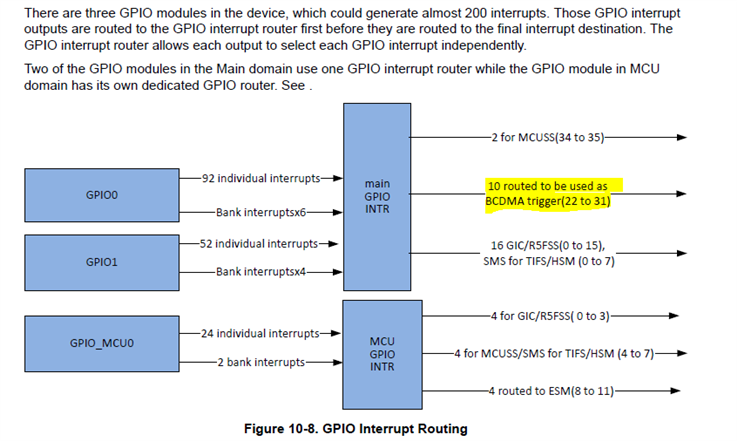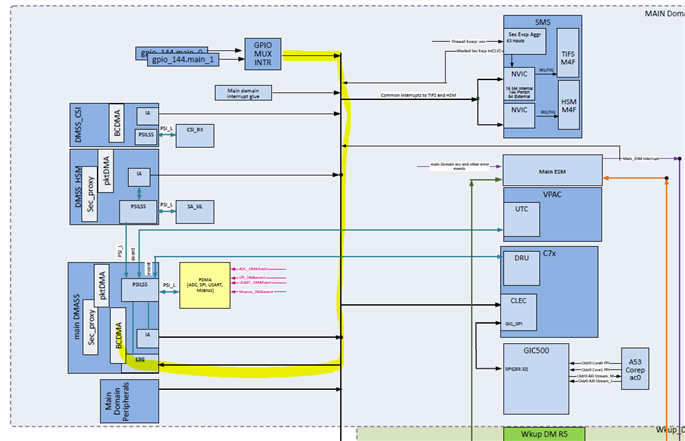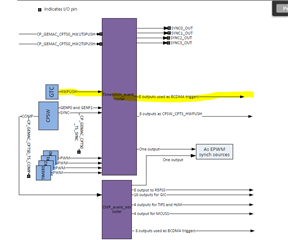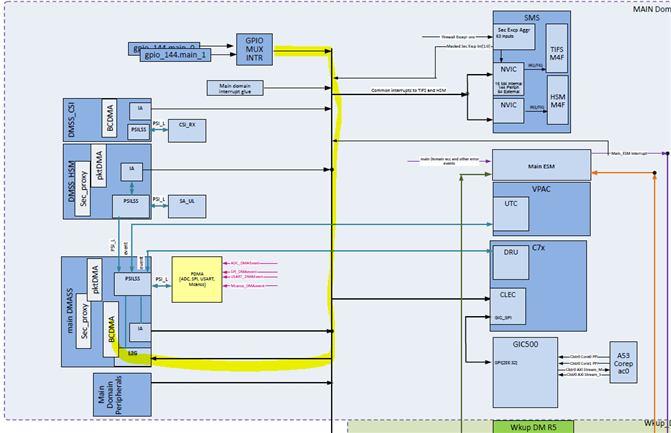hi
when am62a mcu use 12 mcu_gpios(such as mcu_gpio0_0 to mcu_gpio0_11) connect to 12 ak1 radars, the mcu_gpios config as input, and ak1 radar send data.
we want use udma work as: when one mcu_gpio recv a Rising edge or Falling edge,the udma auto read the GTC timer count and write to the memory which we config; from zhcab72.pdf gpio+udma cap pwm
1. How many udma we can use in the scene ?
2. a udma can be trigged by any mcu_gpios(such as mcu_gpio0_0 to mcu_gpio0_11) ?






